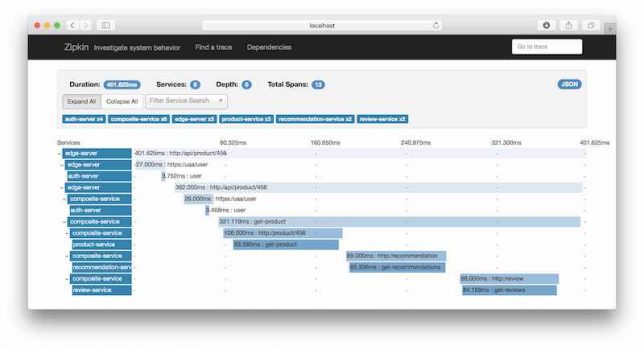Simplify Distributed Troubleshooting with Spring Cloud Sleuth
Building microservices-based applications is becoming increasingly popular among developers, but with this architecture comes the challenge of troubleshooting in a distributed environment. That’s where Spring Cloud Sleuth comes in. This open-source distributed tracing solution provides developers with the ability to easily trace the path of a request through a distributed system and identify any bottlenecks or issues. In this article, we’ll explore the features and benefits of Spring Cloud Sleuth and show you how it works.
Features of Spring Cloud Sleuth
Spring Cloud Sleuth offers several features that make distributed tracing easy and effective:
- Automatic tracing: Spring Cloud Sleuth provides automatic instrumentation of Spring Boot-based applications, allowing developers to start tracing without any additional code.
- Integration with Zipkin: Spring Cloud Sleuth integrates with Zipkin, a distributed tracing system, allowing developers to analyze traces and identify bottlenecks in distributed systems.
- Compatibility with other monitoring tools: Spring Cloud Sleuth is compatible with other monitoring tools, such as Prometheus, Grafana, and ELK stack, allowing developers to integrate distributed tracing with their existing monitoring and logging infrastructure.
- Customizable tracing: Spring Cloud Sleuth provides the ability to customize the tracing data with custom annotations, tags, and spans, allowing developers to add additional context and details to trace data.
Benefits of Spring Cloud Sleuth
By simplifying distributed troubleshooting, Spring Cloud Sleuth offers several benefits to developers:
- Improved troubleshooting: With Spring Cloud Sleuth, developers can easily identify and isolate issues in distributed systems, reducing the time and effort required to troubleshoot problems.
- Enhanced observability: Spring Cloud Sleuth provides developers with a detailed view of the flow of requests through a distributed system, helping them to understand how their application is performing.
- Increased scalability: Spring Cloud Sleuth helps developers to optimize the performance of their microservices-based applications, improving the scalability of the application.
How Spring Cloud Sleuth works
Spring Cloud Sleuth works by creating and propagating trace and span IDs across a distributed system. Each microservice generates a unique trace ID and span ID when a request enters it. These IDs are then attached to the request, and as the request travels through the system, each microservice appends its span ID to the trace ID, creating a trace tree. Once the request exits the system, the trace tree can be analyzed to identify any bottlenecks or issues. Below is a sample trace viewed in Zipkin.
Conclusion
In conclusion, Spring Cloud Sleuth is an essential tool for developers building microservices-based applications. With automatic tracing, integration with Zipkin, compatibility with other monitoring tools, and customizable tracing, Spring Cloud Sleuth simplifies distributed troubleshooting. Its benefits include improved troubleshooting, enhanced observability, and increased scalability. By creating and propagating trace and span IDs across a distributed system, Spring Cloud Sleuth enables developers to easily trace the path of a request and identify any bottlenecks or issues.


